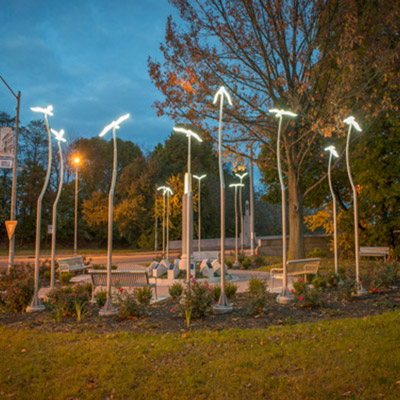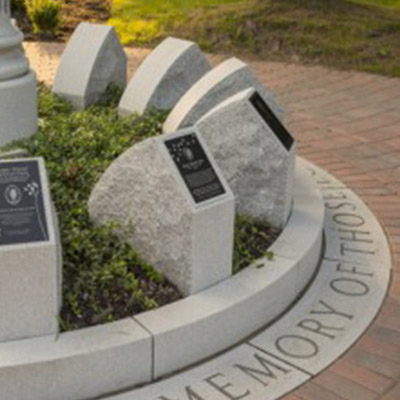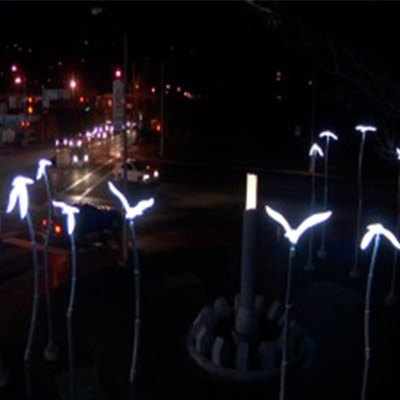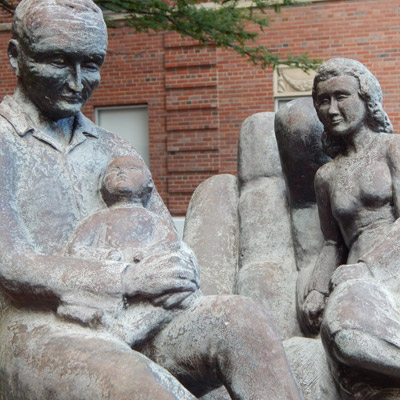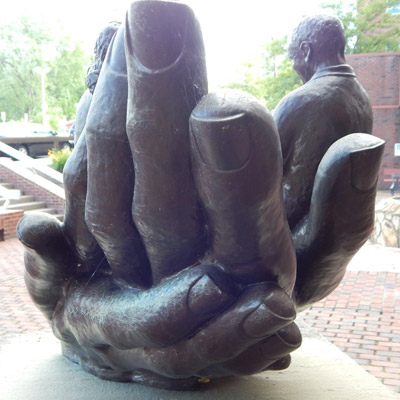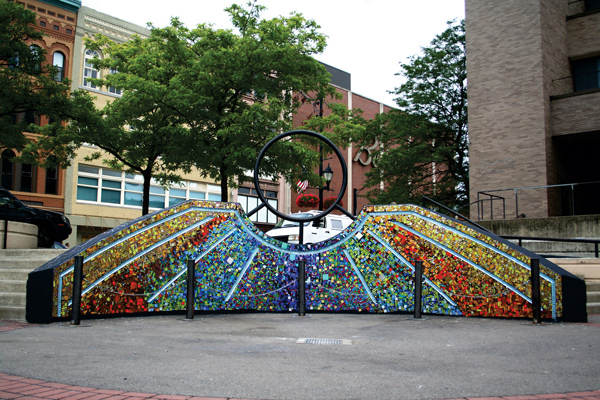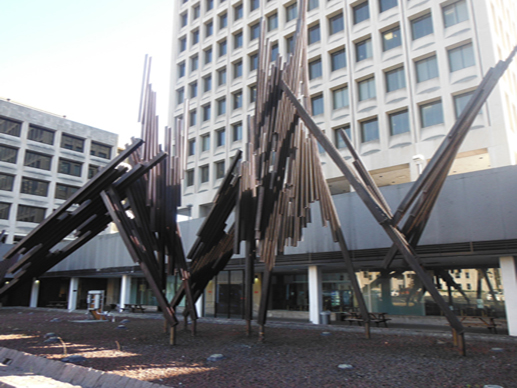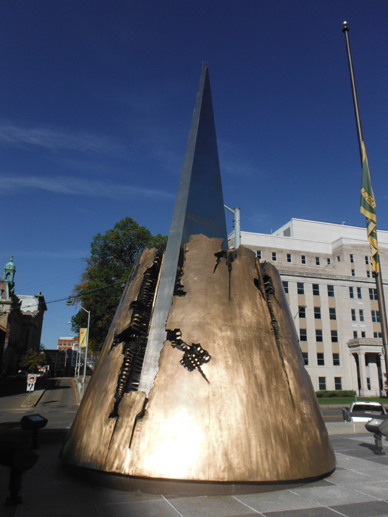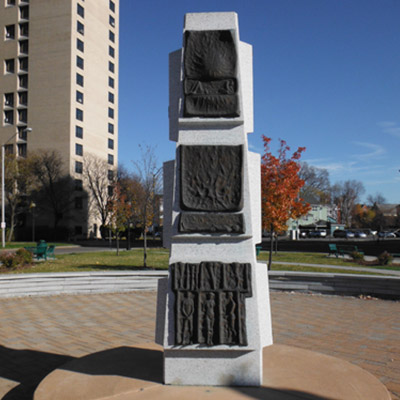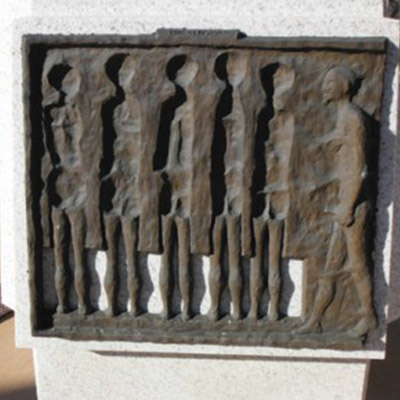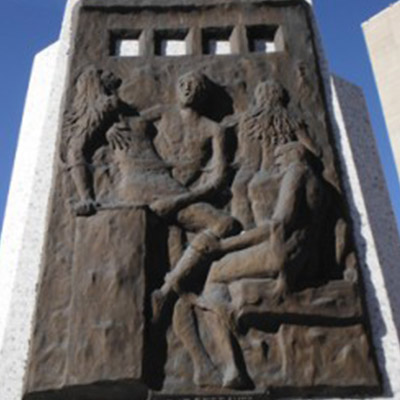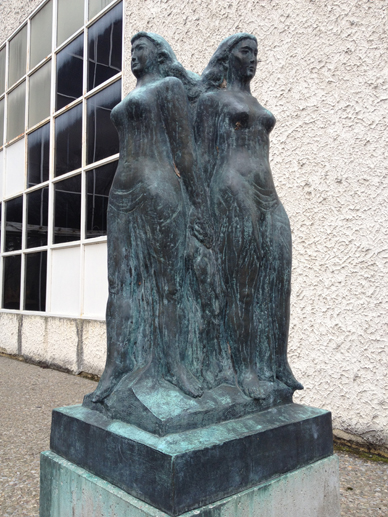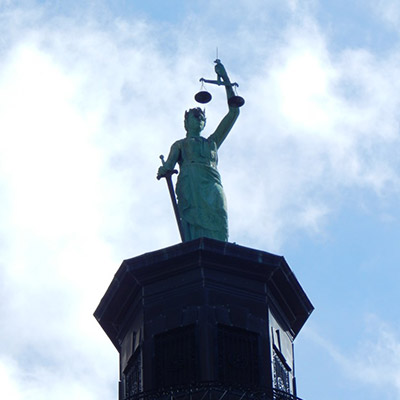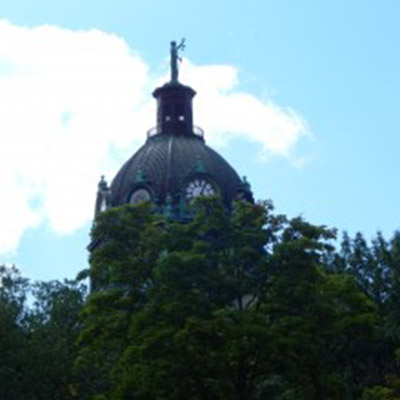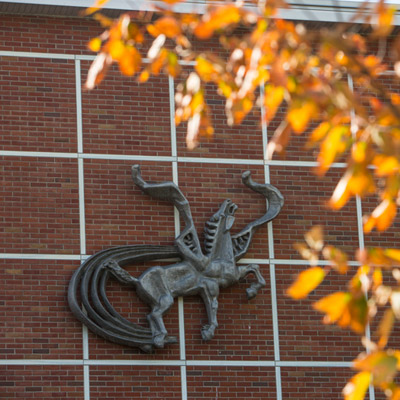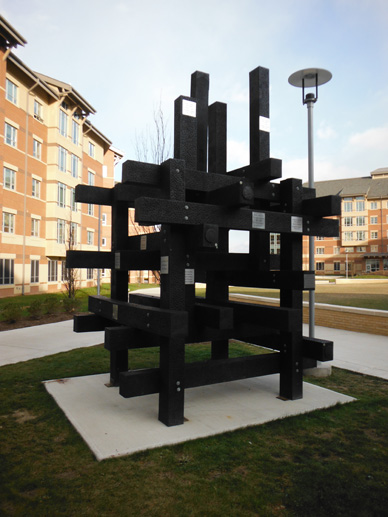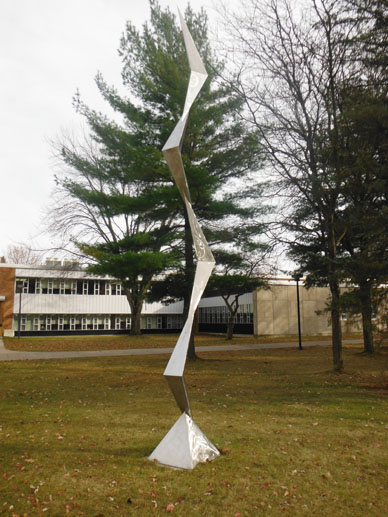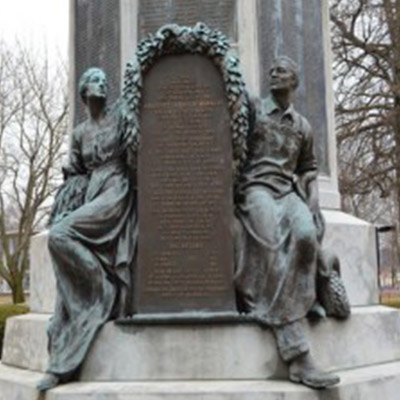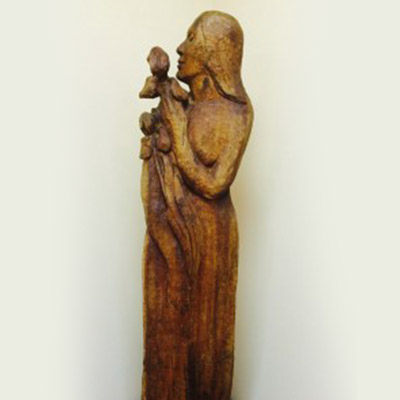The weather was crisp but sunny on Jan. 10 as people comfortably filled St. Patrick’s Roman Catholic Church on Leroy Street in Binghamton for the program “Stories in Glass,” which explained the stained glass windows of German artisan Franz Mayer of Munich. Mayer opened a studio in New York at the turn of 20th century, which at its height employed 400 people. The dozen Mayer windows in the east and west walls of St. Patrick’s date from between 1911 and 1915, and the three-panel altar window dates from 1928. These windows depict key events in the life of Jesus and of the congregation’s patron saint, Patrick, the Fifth Century missionary and Bishop of Ireland.
At the top of the nave, another set of 10 pairs of windows portrays the Apostles, St. Paul and early church fathers. High in the transepts and chancel are four windows original to the 1873 church, depicting Sts. Dominic, Patrick, Paul and Peter.
As a (retired) pastor, I love the rich symbolism and beauty in church stained glass windows. Historically, visual art and drama were used to teach the faith when most people were illiterate. In olden times and modern, stained glass art is an expression of devotion to the glory of God.
On floor level at St. Patrick’s, walking from southeast to northeast then northwest to southwest, windows alternate between the life of Jesus and the life of Patrick. The life of Jesus is traced from annunciation and nativity through resurrection and ascension.
Windows depict from Patrick’s life the dream calling him to return to Ireland, his arrival by boat, his preaching to High King Laegaure at the Royal Court of Tara, his baptizing of the Irish King and Patrick on his deathbed, surrounded by angels. Symbols of Ireland appear in smaller details: the round tower, the shamrock and the harp (seen on Irish coinage).
The central altar window depicts Christ the King, with 25 figures and a dove at the apex. Curiously, Irish patron Sts. Brigid (with crosier and lamp), and Patrick occupy positions higher even than Mary and Joseph. Other easily recognized figures include Ambrose with beehive, Peter with key and Paul with sword. Christ is seated on a rainbow (covenant of Noah) and a blue Star of David appears behind Christ’s nimbus (halo of divinity).
Some of the symbols are small and subtle: the Star of Bethlehem and a ray of starlight in a wheat shock, lilies (resurrection), rose (messianic rose of Sharon) and shamrock (Trinity). I would have liked more attention to these detail symbols.
It’s a shame there’s no way to easily view the upper windows. Field glasses or a zoom lens camera reveal equally detailed and richly robed figures of the (11) Apostles and Paul, each with his traditional symbols, plus Sts. Ambrose (beehive), Basil, Gregory the Great (dove), Gregory of Nazianzus, Athanasius, John Chrysostom (patriarchal cross), Augustine (burning heart) and Jerome (translating scripture).
Syracuse stained-glass artisan Jerome Durr explained some of the history and technique of stained glass art in the United States. The color comes from hot metals (cobalt, iron, silver, gold) melted into the molten glass, then slowly cooled (annealed) for strength. Individual glass pieces are encased in lead alloy channels. Detail lines are vitreous oxide paints colored by heavy (and toxic) metals such as cadmium and arsenic and fired (melted) into the glass surface in a kiln.
Durr explained that enclosures protecting stained glass windows from weather and vandalism must still allow air flow; otherwise temperatures could reach 175 to 180 degrees F, causing long-term deterioration of both window and wooden frame. So enclosures now have stainless steel screening at the top and bottom.
Proceeds from the “Stories in Glass” program will be used to restore St. Patrick’s 1928 Austin organ, a gift of Lillian Johnson Sweet, daughter of George F. Johnson. The four-manual instrument contains 54 ranks comprising 1,877 pipes from 2 inches to 12 feet in length, plus 100 pedal pipes. At the program, the Honorable Mary Anne Lehmann, Binghamton City Court Judge, explained how her grandfather, James Joseph Case, a 1913 graduate of the Troy Conservatory, was recruited from St. Mary’s Church to St. Patrick’s Church in 1919 by Fr. Ambrose Dwyer, becoming the first organist to play the new Austin organ, and remaining its organist for 30 years. A sign placed above the keyboards by Case, still announces: “Rich am I in gold, rich am I in tone; if thy music be not noble, leave my keys alone!” The program included a sampling from the organ, J.S. Bach’s prelude “Nun Danket Alle Gott,” played by St. Patrick’s organist, Michael J. Steflik.
— David L. Schriber, a.k.a CyberBassDave
Let’s talk about stained glass. Does your house of worship have noteworthy windows? Are you a stained-glass artist, and, if so, what is the focus of your work?




